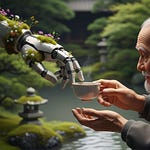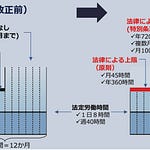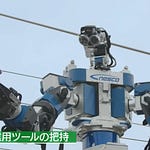Japan is a nation known for its technological initiative and innovative spirit, and in recent years, it has become a global leader in the journey towards a sustainable future through its commitment to sustainable engineering; in fact, according to a research carried out by UNEP (United Nations Environment Programme), Japan’s renewable energy capacity investment was ranked fourth in the world in 2019.
First of all, we should have an exact definition of sustainable engineering: it consists of designing systems in a way that minimizes the negative impacts on the environment.
These efforts are shown in the integration of environmental considerations into the engineering profession in different ways. For instance, some researchers are currently exploring new options for widely used materials like plastic, which is harmful to the environment as it takes centuries to decompose. Another way Japanese engineers are incorporating sustainable practices is by aiming for green certificates, which state the extent to which new buildings are adding value to the surrounding environment; these green certificates include the LEED (Leadership in Energy and Environmental Design) and CASBEE (Comprehensive Assessment System for Built Environment Efficiency).
Even though climate change is on the minds of engineers when developing a plan, they are not ready to sacrifice performance and the economic value brought by the project. Therefore, the final product will be a mix of innovative aspects and sustainable solutions.
This article addresses Japan's efforts in sustainable engineering, including:
the most important green certificate
the path towards renewable energy
some global policies that provide regulations for individual countries to face ongoing climate change
how the country's infrastructure is already implementing green features.
In recent years, there has been a remarkable rise in the demand for engineers, and Japanese companies are starting to amplify their research abroad (for more information about this topic please consult my other article “Opportunities for IT professionals working in Japan”, available on Substack).
Thanks to new possibilities created by investments in sustainable engineering, the nation has become the perfect option for everyone seeking an experience in the world's most dynamic and tech-powered business environment.
CASBEE
The Comprehensive Assessment System for Built Environment Efficiency (CASBEE) is one method adopted by the country to monitor how new constructions affect climate change. It is a rating tool to evaluate a building's construction performance from a sustainable point of view.
*CASBEE Certificate - Source: https://www.ibecs.or.jp/CASBEE/english/*
Similar analysis instruments are adopted in Japan, including BELS (Building-Housing Energy-efficiency Labeling System), ZEH (Net Zero Energy House) and LEED (Leadership in Energy and Environmental Design).
The CASBEE is often preferred to similar practices because it is specifically designed for Japan’s environmental conditions, including seismic activity and urban density, and its evaluation model covers a wider range of criteria compared to other systems.
The first assessment tool became effective in 2002 for offices. Unlike other rating systems, the CASBEE was not established by a non-profit organization; instead, there was a strong role played by the government itself.
The government is deeply involved in controlling climate change and has supported efforts ever since it declared the objective of reaching carbon neutrality by 2050.
This system works thanks to an indicator called BEE, which stands for Building Environmental Efficiency. It considers a hypothetical boundary to analyze the building in relation to its context. The indicator is based on two factors: environmental quality and environmental load.
First of all, environmental quality focuses on the improvement of the internal environment within the boundary, thus on the quality of life for inhabitants. This aspect is divided into three subcomponents: indoor environment, quality of service, and outdoor environment.
Then, environmental load analyzes the negative impact on the environment and is based on three aspects as well: energy, resources and materials, and off-site environment.
Finally, the CASBEE uses a scale from S (excellent) to C (poor) to categorize how sustainable buildings are.
Transition to Renewable Energy
Being already the world leader for some the of the biggest technological advancement, Japan is quickly becoming a model to follow for the introduction of renewable energy sources.
Its journey towards these new solutions was marked by policies and measures taken in moments of crises, which gave the country a push to leave behind fossil fuels and adopt more sustainable methods.
The first real effort to implement renewable energy systems came in the 1970s after two important oil shocks; during this decade, two projects were initiated: the Sunshine Program and the Moonlight Program.
The two oil crises really shook the Japanese economy, as the country was experiencing several years of economic growth prior to the mid-1970s. If we analyze the effects of the first shock, we will see that apart from a decrease in the economic growth from 8% to 4% in 1971, Japan was in a good place economically speaking, but 1973’s oil crisis caused recession, as it led to a 10% fall in the economic growth.
The graph below shows Japan’s economic growth movements prior and after the first shock, with a comparison to United Kingdom and United States.
Source: Marius Ioan Mihut, Decean Liviu Daniel - First oil shock impact on the Japanese economy
This analysis is to show that the effects generated by this moment of crisis were so impactful that it was a real moment of realization for the government to move towards renewable energy, to reduce the dependance from oil.
The Sunshine Program (1974) was the first one to be implemented and it was developed to reduce the country’s dependance from fossil fuels by exploiting solar energy, geothermal power, wind power and tidal energy.
Instead, the Moonlight Program (1978) was carried out not to develop renewable energy, but to explore energy conservation and efficiency.
Moving closer to us in the timeline, an important step for the adoption of new types of energy sources was taken by the Kyoto Protocol (1997), which set binding emission reduction objectives for developed countries. The pact was hosted and of course signed by Japan.
Another key protocol for sustainability was the Paris Agreement (2016), and the countries who signed it agreed to limit the global warming to well below 2 degrees Celsius, compared to pre-industrial times.
Sustainable Public Transportation
Japan's efforts to reduce emissions and have a positive impact on the environment are highlighted in its public transportation system.
Within cities, a functioning infrastructure has successfully reduced the number of cars in urban centers, resulting in lower emissions.
For intercity connections, Japan relies on the Shinkansen, the incredibly fast bullet train, which is also very sustainable since it is based on electricity rather than fossil fuels. The country is currently developing Maglev trains, which use magnetic levitation.
The introduction of Maglev trains will enable enhanced efficiency and eco-friendly transportation.
L0 Series Maglev train under testing in 2020
In the areas of Tokyo and Kyoto, several trains run on 100% renewable energy. Additionally, the transportation company JR East declared in February 2022 its intention to adopt hydrogen-powered trains to be operative by 2030.
These reasons illustrate why sustainability is vital to the government and the population, and it is being implemented by both domestic and foreign engineers. Foreign talents working in this field in Japan will experience a high level of expertise and experimentation due to all the innovative projects listed so far, boosting their future careers.
New researchers’ efforts
Researchers are currently developing new materials that can pollute less than traditional ones. For example, they are exploring new types of biodegradable plastics, as usual petroleum-based plastics are very polluting and take hundreds of years to decompose. New materials with no toxic components are being investigated.
Japan is also addressing the issue of marine litter. The government has stated that the amount of plastic drifting in the oceans is about 150 million tons.
Experts have proposed alternatives, including polylactic acid (PLA), a plant-based biodegradable plastic. Although PLA presents challenges such as high raw material costs and low heat resistance, it also has significant benefits, decomposing into water and carbon dioxide in soil or seawater within a few months.
State of biodegradation for biodegradable plastic - Source: Japan BioPlastics Association
Another sector where researchers are focusing their efforts is in efficient buildings. Engineers are developing systems to optimize energy, heating, and lighting in energy-consuming buildings.
Research in this field also includes finding new materials for building insulation. A good alternative could reduce heating and cooling expenses.
What we can do for you
My name is Luca Innocenti, and I work for Hello World Japan, a Tokyo-based career assistant startup currently looking for foreign professionals in the IT department.
We provide engineers with career support and programs to facilitate learning the Japanese language, ensuring that employees feel comfortable within society.
If you enjoyed reading this article or are interested in learning more about Japan's work environment and culture, please consult my previous articles, subscribe to our Substack and visit Hello World Japan's website at https://helloworldjapan.com/ to learn about recent job openings.
The article is also available in podcast form on Substack, Spotify, and Apple Podcasts.

















Share this post